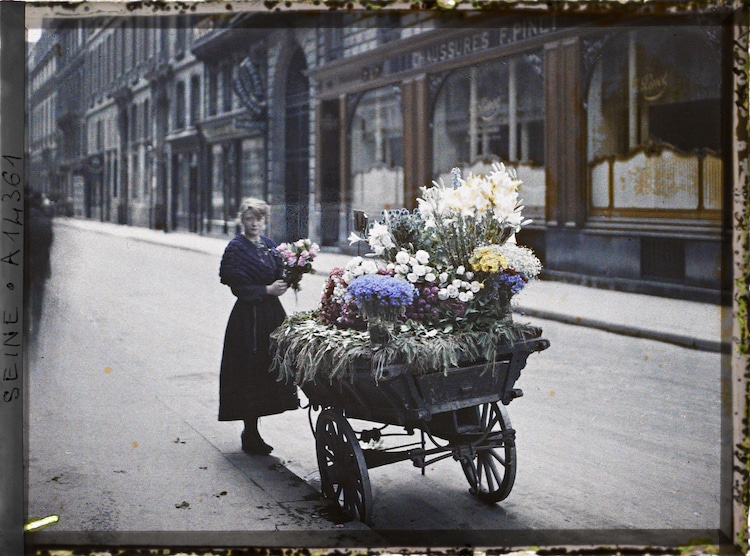
A flower seller in Paris, France (1918)
One museum in France is changing the way we view the past thanks to its vast archive of color photographs from the early 20th century. The Albert Kahn Museum has made nearly 70,000 photographs available to the public at high resolution as part of its quest to digitize The Archives of the Planet project.
French banker Albert Kahn started the project in 1908 with the goal to photograph humanity around the world. The project continued until 1931, with Kahn hiring 12 professional photographers to travel to 50 countries. Not only did they take portraits of people and monuments, but they also documented important historical events like the Turkish War of Independence and the golden jubilee of Jagatjit Singh, the last ruling Maharaja of Kapurthala State.
After compiling 72,000 photos and videos, the project only came to a halt after the stock market crash of 1929 bankrupted Kahn. Since 1990, the Albert Kahn Museum has administered the collection. And while the photos were previously available online, a difficult web interface and low resolution made it difficult to fully enjoy the work.
Now, everything has been made easily available and the public can fully appreciate Kahn’s documentation of a world that was coming into globalization. Through the Image Portal, visitors can enjoy a look at 80% of the Archives of the Planet. The only sticking point is the portal is in French, but it’s well worth firing up Google Translate to peruse the images.
Nearly 70,000 photos from the Archives of the Planet are now available to download at high resolution.
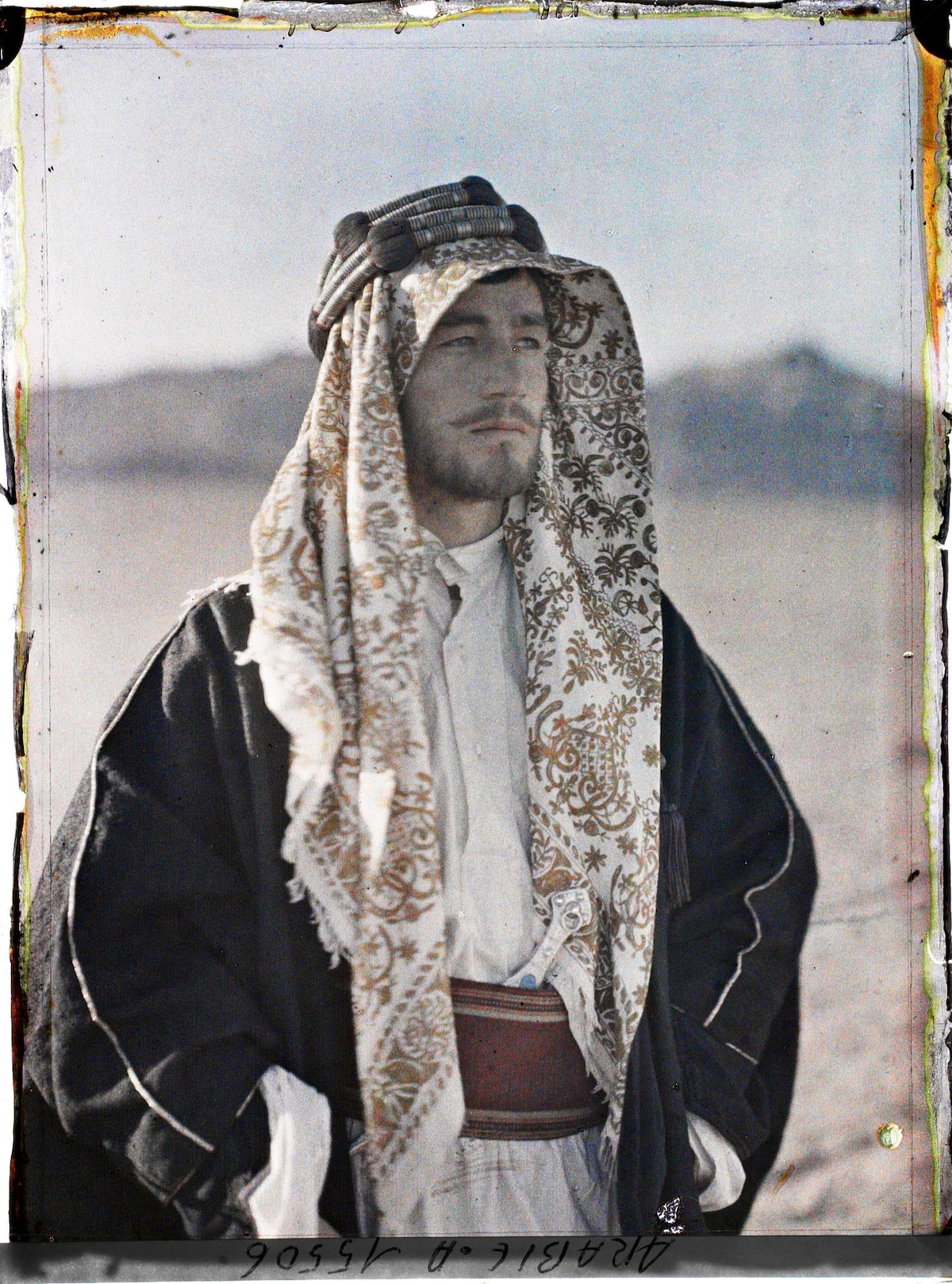
Fayz Bey el Azm, a companion of Emir Faisal, in Quweira, Arabia (present-day Jordan) (1918)
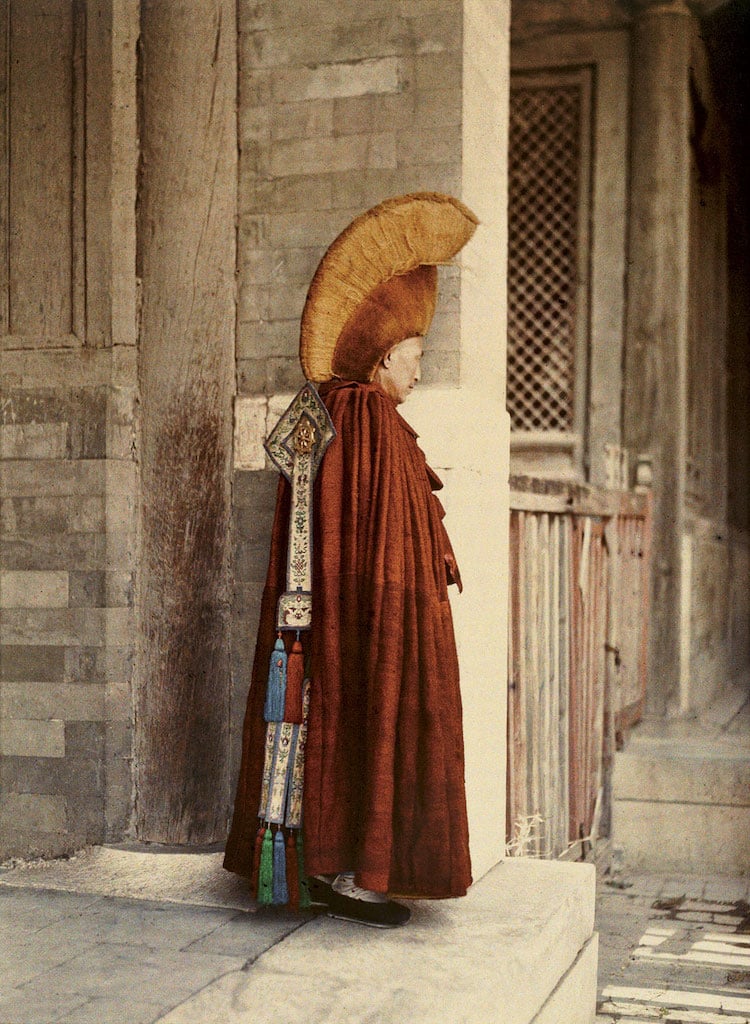
Buddhist lama in Beijing, China (1913)
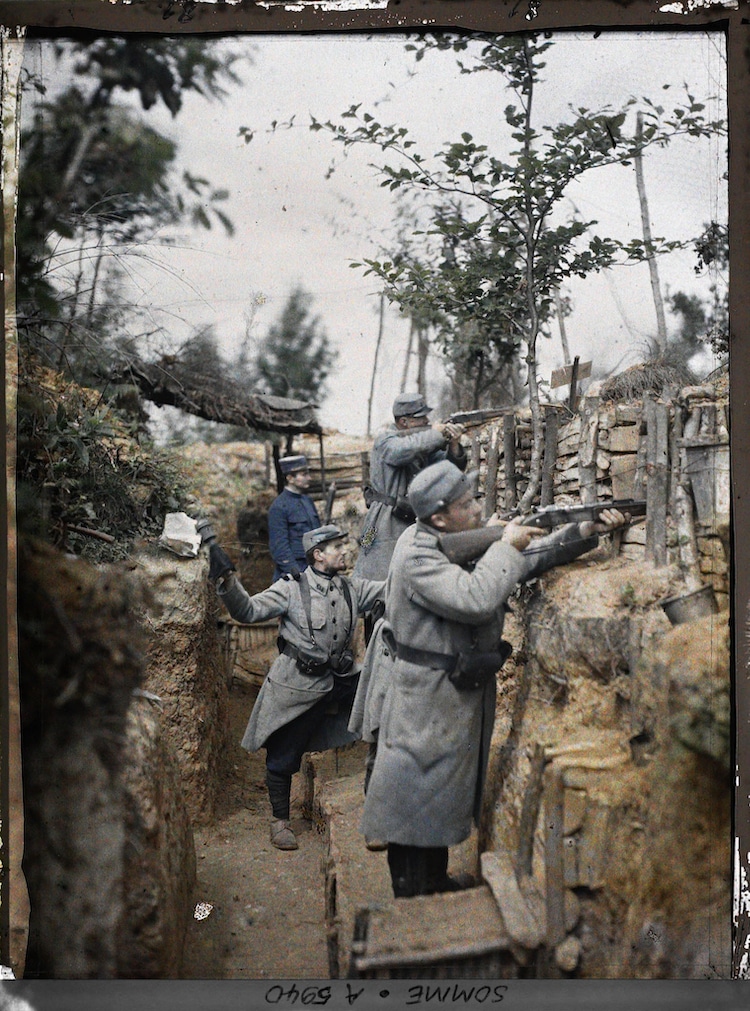
France Front line trench at Le Hamel, Picardy (1915)
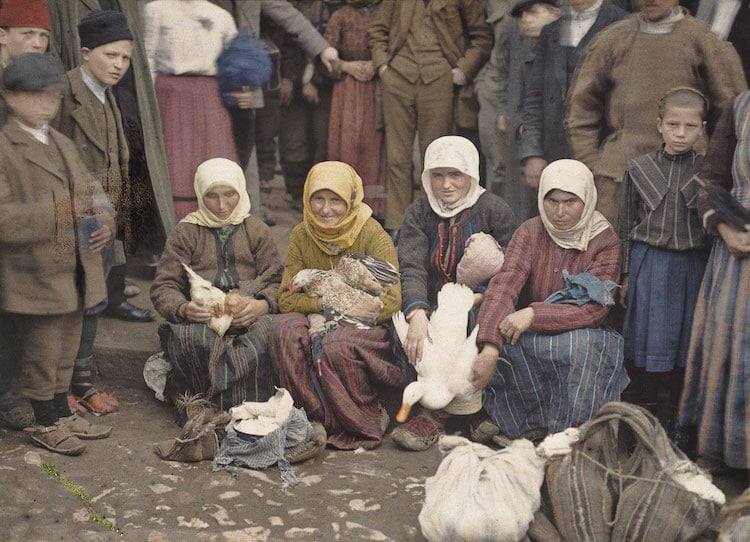
Market scene in Krusevac, Serbia (1913)
The images were taken between 1908 and 1931 in a project financed by French banker Albert Kahn.
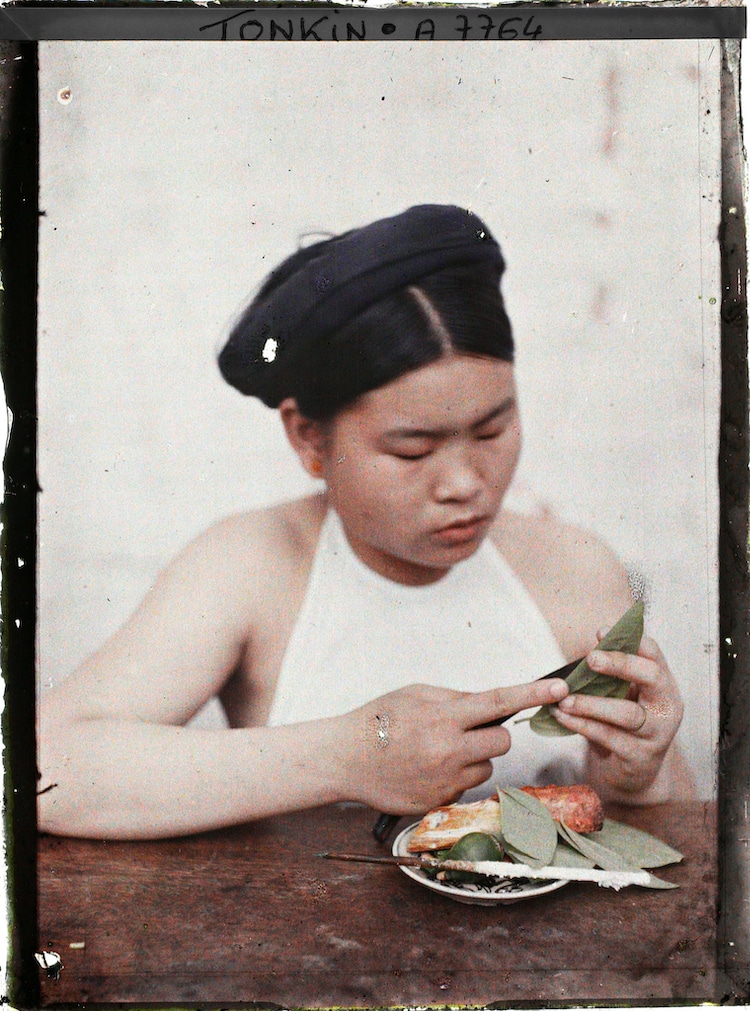
A young woman splitting the betel leaf during the first phase of making a quid of betel in Hà-nôi, Tonkin, Indochina (1916)
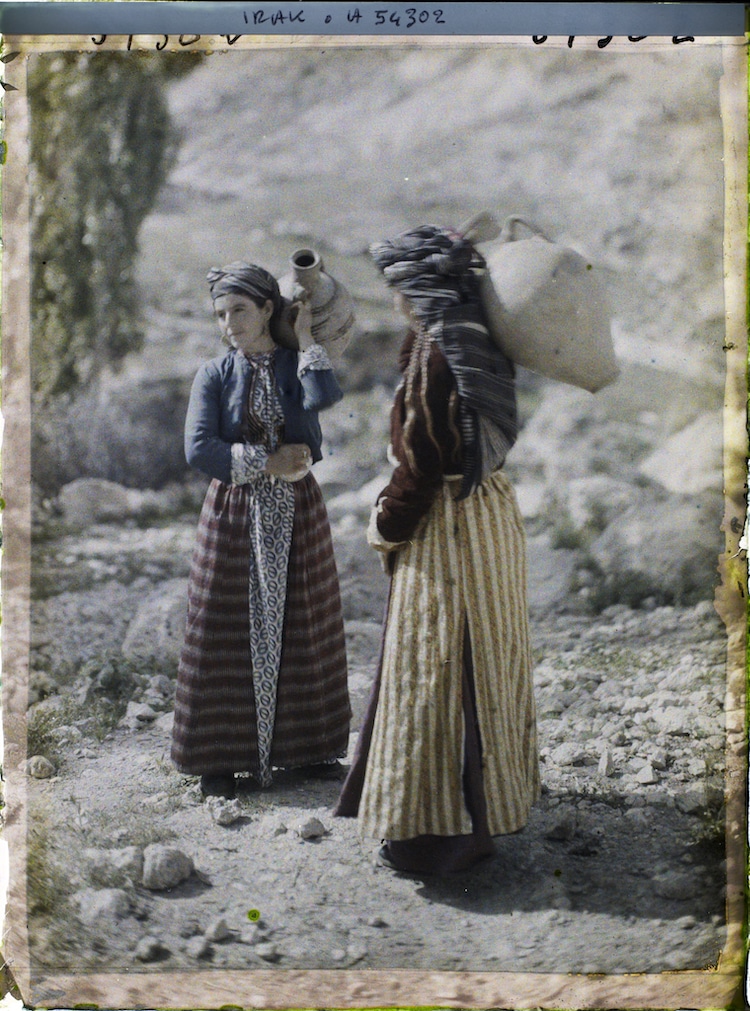
Young Kurdish women in Mar Yakoub, Iraq (1927)
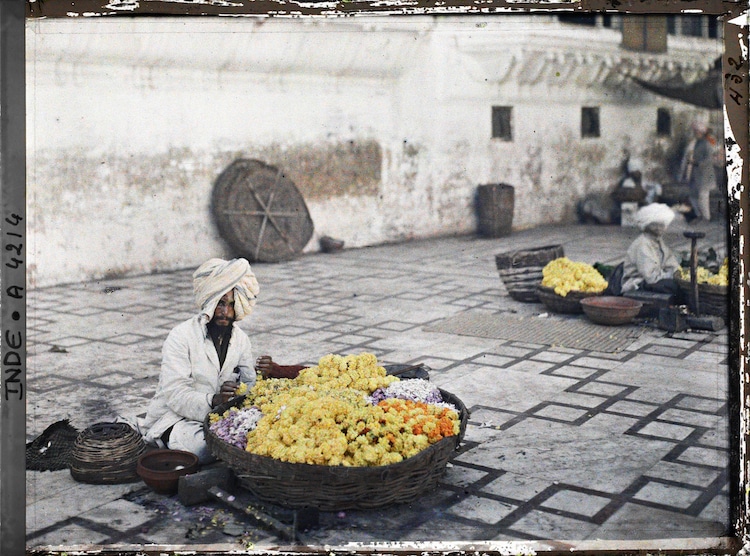
Flower vendors for worshipers near Golden Temple of Sikhs in Amritsar, India (1914)

A young carpet weaver in front of her loom in Algiers, Algeria (1909 or 1910)
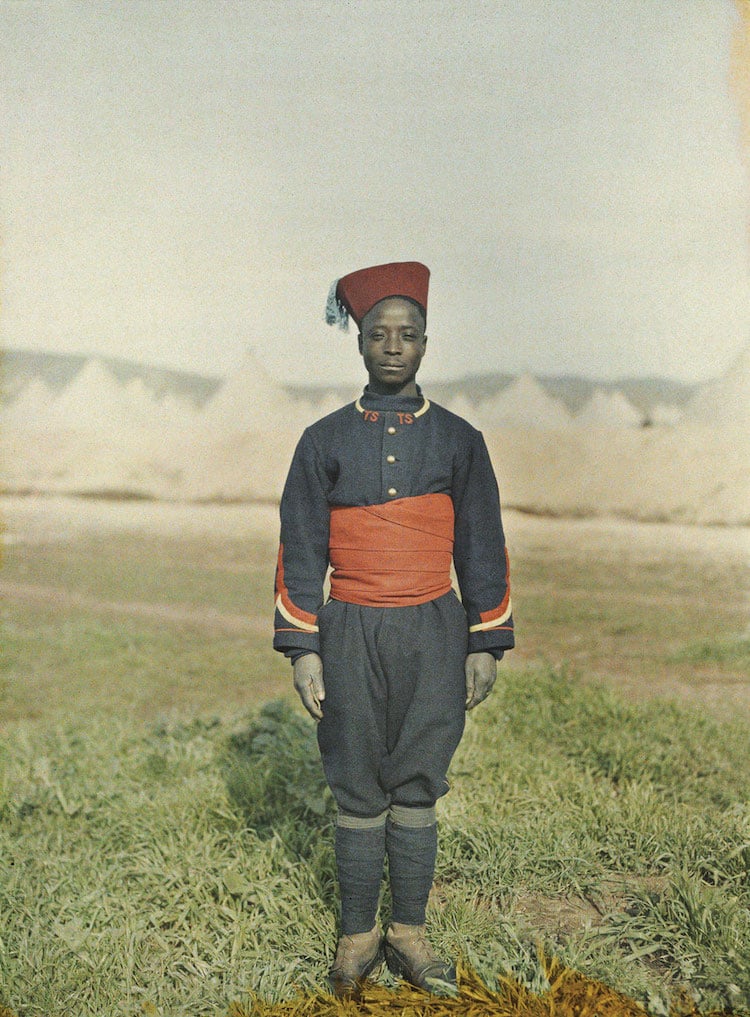
Senegalese sniper in Fez, Morocco (1913)
Albert Kahn Museum: Website | Facebook | Instagram
All images via Albert Kahn Museum (Public Domain).
Related Articles:
Early 20th Century Portraits Preserve the Heritage of Native Americans
How an Early 1900s Photographer Helped Change America as We Know It
Early 20th Century Photos of Japan Showcase the Detailed Process of Tea Production
117-Year-Old Color Postcards Reveal Everyday Life in Tunisia at the Turn of the Century
